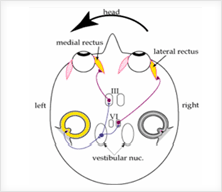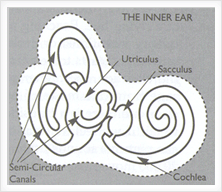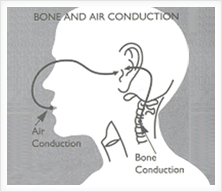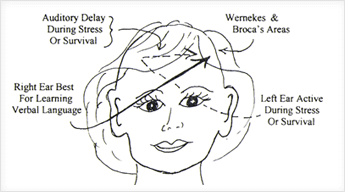청지각 훈련 방법은 1950년대에 토마티스 박사가 오페라 가수들에게 그들의 귀를 재 훈련함으로써 목소리를 되찾게 도와주면서 처음으로 고안되었다. 오페라 가수들이 다시 노래하는 것을 도와주면서, 청지각에 문제가 있는 아이를 훈련해주면서, 그리고 소리로 귀를 자극하면서 종종 얻은 예기치 못한 놀라운 결과들로 인해, 이 방법은 발전을 거듭했습니다.
이 방법에서 사용하고 있는 소리는 귀의 관점에서 본 주요 단계의 발달 사항을 재생산하도록 디자인 되어있으며, 주요 단계는 우리가 태어나기 이전부터 글을 읽고 쓰는 것을 배우는 시기까지를 일컫는다. 소리 자극 프로그램은 귀에 여과된 소리를 들려주는 수동적인 단계로 시작해서, 프로그램이 진행되면서 목소리 운동을 하는 식의 능동적인 단계로 변모해갑니다. 프로그램에 걸쳐서, 클라이언트는 자신에게 필요한 격려를 상담을 통해 받을 수 있습니다.
언어와 듣기 능력이라는 것이 원래 연속적으로 발달하는 것은 아니므로, 프로그램의 단계는 모두에게 똑같이 적용됩니다. 다만 개인적인 필요에 의한 각 단계의 내용과 길이가 달라질 뿐입니다.
- 최초 평가
이 평가의 목적은 청지각 훈련 방법이 실질적인 도움을 줄 수 있는가 하는 것입니다. 그리고 그렇다면, 각각의 클라이언트에게 맞춤 프로그램을 제공합니다. 모아진 정보는 가장 주요한 3개의 질문에 대한 답이 됩니다. “듣기 문제를 발생시키는 요인은 무엇인가?” “그 문제의 본질은 무엇인가?” “자신과 다른 사람들과 의사소통 하는데 있어서 이 문제가 어떤 영향을 끼치는가?”입니다.
- 수동적 단계
수동적 단계에서 가장 중요한 점은 귀를 사용할 수 있는 에너지와 필요를 느끼게 해주면서, 앞으로 바뀔 것들에 대해 주체 할 수 있도록, 높은 주파수의 풍성한 소리를 통해-태아기의 환경을 재창출 하는 것입니다. 또한 프로그램의 다음 단계인 연습 단계를 준비하기 위한 작업이기도 합니다.
- 능동적 단계
클라이언트들은 자신의 귀에 공급 하고, 귀를 자극 할 소리를, 자신들의 목소리를 통해 만들며, 이는 목소리 생산을 제어 하는데 도움을 줍니다. 수동적 단계를 통해서, 듣기는 “깨어났다” 고 할 수 있습니다. 이제는 연습을 통해, 목소리에 적용시켜야 할 때가 왔습니다. 클라이언트들은 헤드폰을 통해서 녹음된 소리를 듣고, 마이크에 이를 되풀이 해서 이야기 합니다. 원래의 소리와 목소리는 정확한 듣기를 재창출하기 위해 게이트 효과로 변환되고, 다시 헤드폰을 통해 그들의 귀로 피드백 됩니다.
읽기는 대개 능동적 단계에서 첫 번째로 향상시키는 기술입니다. 선생님들은 학생들이 성취한 것에 대하여 칭찬을 해주며, 성취 결과는 날로 좋아집니다. 손으로 직접 쓰는 능력은 향상되며 철자법 오류는 더욱 쉽게 찾아지고 고칠 수 있게 됩니다. 사실, 지금 이러한 발달이 없었다면, 실수는 발견조차 안 될 수도 있습니다. 나는 종종 아이들이 프로그램에 참여 한 후에 더 많은 실수를 만드는 것에 대한 불평을 듣곤 했는데, 사실, 그들의 철자법 시험에서의 성적은 계속 오르고 있었습니다. 음정에 맞추어 노래하기 위해, 자신이 노래하는 소리를 들을 수 있어야 하며, 더불어 무엇이 맞추어 져야 하는지를 알아야 합니다. 마찬가지로, 철자법을 정확하게 하기 위해서, 어디서 실수를 하는지를 알아 차려야 합니다.
- 상담
대개 15에서 20시간 정도의 소리 자극 프로그램을 진행 시킨 후 상담을 가진다. 이러한 스케쥴을 통해 나타나는 프로그램의 특정한 단계에서 클라이언트의 변화, 그에 대한 설명과 조언과 권장사항을 언제 이야기 해 주는 것이 적당한지를 정할 수 있는 기회를 제공 받을 수 있습니다. 상담이 이루어지기 이전에 행해지는 듣기 테스트를 통해 클라이언트의 차도에 대한 그래프를 만들어 볼 수 있습니다.

청지각 기능의 문제를 야기하는 일반적 원인
- 반복 되어지는 귀의 염증
- 정서적으로 심한 외상을 이른 시기에 입은 경우 : 듣고 이해하려는 욕구를 철수.
- 이른 나이의 출산 혹은 출산 후유증
- 소음에의 노출

청지각적 학습과 의사소통에 문제를 가진 아이들의 특징
- 출생 전후 어려움이 있음.
- 출생 후 엄마와 조기 분리
- 생후 1년 내 귀에 잦은 감염
- 출생 후 2년 내에 동생 태어남
- 좌/우 손 지배성이 잘 안되거나 늦음
- 언어 발달이 늦음
- 학교나 직업상에서 성취도가 낮음
- 학교 입학 후 첫 2년간 학교 생활 적응이 잘 안되고 교사에 의해 문제가 있는 아이로 인식

중추 청각 정보 처리 기능 이상 Central Auditory Processing Disorder (CAPD)
말하는 것을 기억하고 이해하고 사용하는 과정에 문제가 있는 다시 말해, 청력은 정상임에도 불구하고 정보를 해석하고 저장하는 과정에 기능적 이상이 있는 것을 말합니다. 아래의 중추 청각 정보 처리 과정인 1)에서 6)까지 과정 중 기능 이상이 있을 때 나타나는 현상을 말합니다. 미국에서는 17% 학생이 청각 이상으로 학습에 문제가 발생한 것으로 알려져 있습니다. (미국 NICHD 1991 & 1994)

중추 청각 정보 처리 과정
- Phonologic Awareness: 단어에서 sound를 구별하는 능력
- Auditory Discrimination: sound에서 음성의 크기, 음률의 높이, 음성의 길이, 단어 속에서 음소(phoneme)를 구별하는
- 능력
- Auditory Memory: 듣고 저장 기억하는 능력
- Auditory figure-ground discrimination: 주변 소음과 음성을 구별하는 능력
- Auditory Sequencing: 음성이나 대화 내용을 차례대로 기억하는 능력
- Auditory Blending: 음성을 합쳐서 하나의 단어로 만드는 능력

중추 청각 정보 처리 기능 장애 Central Auditory Processing Disorder (CAPD)의 특징
- 지시를 이해하는데 어려움
- 반복해서 지시해야 함.
- 잡음이 있는 장소에서 이해하는데 문제 있음
- spelling, 읽기, 다른 학습 문제 있음
- 소리, 낱자, 숫자를 순서대로 하기 어려움
- 말하기 혹은 언어가 지체
- 말하거나 쓸 때 중간 음 혹은 음소를 빠트림
- 반응 시간이 느리다

리스닝 휘트니스 Listening Fitness
자신의 목소리와 특별히 고안된 고주파의 음악을 사용하여 Listening 기술들을 향상시키기 위한 교육적인 테크닉을 말합니다. Listening Fitness을 위해 특수하게 만들어진 유일무이한 도구가 LiFT(Listening Fitness Trainer)라는 훈련 도구입니다.
듣기는 언어 습득, 학습 능력, 집중력, 집중 및 집중력을 포함한 기술 개발에 핵심적인 역할을 하는 능동적인 기능입니다. 또한 독서와 글쓰기는 귀가 소리를 인지할 뿐만 아니라 눈을 포함하여 우리의 균형과 신체 움직임을 제어하기 때문에 듣기와 관련이 있습니다.
LiFT는 이러한 듣기와 관련된 기능 향상을 위해 만들어진 휴대가 가능한 오디호 훈련 도구로써, LiFT라는 장치를 이용하여 기본적인 듣기 기능 이외에도 골전도 및 마이크를 통해 소리를 직간접적으로 듣고 말할 수 있는 훈련을 할 수 있습니다. LiFT를 이용한 듣기 훈련(Listening Fitness)은 독창적이며 사용자 친화적인 방법과 기술이 적용되어 있습니다.

리스닝 휘트니스 훈련 Listening Fitness Training
청각-정신-음성학 (Audio-Psycho-Phonology)의 창시자인 알프레드 토마티스 (Alfred Tomatis: 프랑스 이비인후과 의사)에 의해 처음 만들어 졌으며 이후 연구를 거듭하여 제자인 Paul Madaul에 의해 최근 사용하고 있는 LiFT가 개발되었습니다.
· 고막의 문제
게이트 통해 저주파수와 고주파수를 증폭시킨 gated sound를 계속 switch on & off 하면서 들려줌으로써 두 근육을 긴장/이완 시킵니다.
· 시각-청각적 통합의 문제
 저주파로 게이트(gate) 된 음악으로 훈련함으로써 눈과 귀의 협응, 운동 기술과 자세가 좋아집니다.
저주파로 게이트(gate) 된 음악으로 훈련함으로써 눈과 귀의 협응, 운동 기술과 자세가 좋아집니다.
· 음성 구별의 문제
 음성 구별의 문제 → 특수 주파수 밴드를 게이트(gate) 한 음을 들려줍니다. ⇒ sounds를 명확하게 들려주면 스펠링(spelling)도 좋아집니다.
음성 구별의 문제 → 특수 주파수 밴드를 게이트(gate) 한 음을 들려줍니다. ⇒ sounds를 명확하게 들려주면 스펠링(spelling)도 좋아집니다.
· 골전이가 지나칠 때 탈감작
 음두뇌의 정수리 부위에 진동 장치를 부착한 기기를 통해 게이트(gate) 된 음악을 들려줍니다.
⇒ 소리가 골 전이보다 귀로 전달되는 것이 일차적이 되도록 훈련을 합니다.
⇒ 진동장치(Vibrator)를 통하여 body listening을 하게 하고 동시에 ear listening
⇒ 결국 지나친 골 전이가 두뇌로 가는 것을 줄여주고 ear listening이 일차적(primary)이 되도록 합니다.
음두뇌의 정수리 부위에 진동 장치를 부착한 기기를 통해 게이트(gate) 된 음악을 들려줍니다.
⇒ 소리가 골 전이보다 귀로 전달되는 것이 일차적이 되도록 훈련을 합니다.
⇒ 진동장치(Vibrator)를 통하여 body listening을 하게 하고 동시에 ear listening
⇒ 결국 지나친 골 전이가 두뇌로 가는 것을 줄여주고 ear listening이 일차적(primary)이 되도록 합니다.
· 좌측 귀 지배성의 문제
 소리를 필터할 수 있는 훈련을 통해 책을 읽게 하고 자신의 소리를 filter하여 계속 Right ear로 듣게 훈련.
소리를 필터할 수 있는 훈련을 통해 책을 읽게 하고 자신의 소리를 filter하여 계속 Right ear로 듣게 훈련.
Tomatis Method & LiFT Literature: More than 100 papers, starting 1952
For more information for professionals or individuals interested in therapy, see our home page, Tomatis Method
1. A Solution to the Riddle Dyslexia - Levinson HN. (Berlin, Springer-Verlag, 1980)
2. About the Tomatis Method ? Gilmor T., Madaule P., Thompson B. (Toronto: The Listening Centre Press, 1989)
3. Again: auditory training acc. to Tomatis, PADIATRISCHE PRAXIS, Vol.57(4), 2000.
4. Alternative and controversial treatments for attention-deficit/hyperactivity disorder. - Baumgaertel A. Pediatr Clin North Am. 1999 Oct;46(5):977-92. Review.
5. An historical commentary on the physiological effects of music: Tomatis, Mozart and neuropsychology.
- Thompson BM, Andrews SR. Integr Physiol Behav Sci. 2000 Jul-Sep;35(3):174-88. Review.
6. An Historical Commentary on the Physiological Effects of Music: Tomatis, Mozart and Neuropsychology, INTEGRATIVE PHYSIOLOGICAL AND BEHAVIORAL SCIENCE, Vol.35(3), 2000.
7. Audio-psycho-phonology acc. to Tomatis, PADIATRISCHE PRAXIS, Vol.59 No.3, 2001.
8. Audio-psycho-phonology: a comparative outcome study on anxious primary school pupils - Plessis WFD. and Jaarsveld PV. South African Journal of Psychology 18(4): 144-151, 1988.
9. Auditory integration training and other sound therapies for autism spectrum disorders. - LinksSinha Y, Silove N, Wheeler D, Williams K. Cochrane Database Syst Rev. 2004;(1):CD003681. Review.
10. Auditory training following Tomatis. PADIATRISCHE PRAXIS, Vol.51(3), 1996.
11. Beethoven Is Living Upstairs ? Hammond S. (A & M Record Co., 1989)
12. Birth without Violence - Leboyer F. (New York: Alfred A. Knopf, 1974)
13. Brief report: the effects of Tomatis sound therapy on language in children with autism. - Corbett BA, Shickman K, Ferrer E. J Autism Dev Disord. 2008 Mar;38(3):562 -6. Epub 2007 Jul 3.
14. Diagnosis of Vestibular Disorders in the Learning Disabled - J. de Quiros, Journal of Learning Disabilities 9: 50-58, 1976.
15. Education et Dyslexie ? Tomatis A. (Paris: Editions E.S.F., 1971)
16. Fetal Reactivity to Tonal Stimulation: A Preliminary Report ? Bernard J and Sontag LW. Journal of Genetic Psychology 70:205-210, 1947.
17. Human Development ? Faulkner F. (Philadelphia: W.B. Saunders Publishing, 1966).
18. L’Oreille et le Langage ? Tomatis A. (Paris: Editions du Seuil, 1963)
19. La Surdite Professionelle ? Maduro R., Lallement M., Tomatis A. (Paris: Librarie Arnette, 1952)
20. Les Troubles Scolaires? Tomatis A. (Paris: Ergo Press, 1988)
21. Long Term Average Spectra of Continuous Speech Before and After Tomatis Audio-Vocal Training - W.WEISS, Revue Parole 77, 1985.
22. Modifications Phonatoires d’Origine Auditive et Applications Physiologiques et Cliniques ? Hussson MR., Moulonguet M. Bulletin de l’Academie Nationale de Medecine/2 141:19-20, 1957.
23. Mozart ? Davenport M. (New York:Avon Books, 1979).
24. Multimodal enhancement of culturally diverse, young adult musicians: a pilot study involving the Tomatis method, SOUTH AFRICAN JOURNAL OF PSYCHOLOGY, Vol.31(3), 2001.
25. Neonate Movement Is Synchronized with Adult Speech: Interactional Participation and Language Acquistion ? Condon W. and Sandler L. Science, 11 January 99-101: 1974.
26. Neuf Mois au Paradis ? Tomatis A. (Paris: Ergo Press, 1989)
27. On the request that Social Security take responsibility for the Tomatis method - Pialoux P. Bull Acad Natl Med. Jan;177(1):43-6, 1993.
28. Perceptual Theories of Middle Ear Muscle Function - FB Simmons, Annals of Otolaryngology, Rhinology, Laryngology 73: 724-739, 1964.
29. Plan of therapy and rehabilitation in stuttering patients - Szkiełkowska A, Raty?ska J, Czyzewski A, Skarzy?ski H, Kurkowski M, Mularzuk M, Markowska R. Otolaryngol Pol. 2003;57(4):555-9.
30. Postural System, Corporal Potentiality and Language.- Quiros JB., Shrager OD.,? Foundations of Language Development (New York: Academic Press, 1975)
31. Pourquoi Mozart? ? Tomatis A. (Paris Fixot, 1991).
32. Pre- and Peri-Natal Psychology: An Introduction - Verny T. (New York: Humans Sciences Dress, 1987).
33. Prenatal and Neonatal Speech ? Truby HM. Pre-Speech and Infantile Speech Lexicon, 1971
34. Private Speech: Learning Out Loud ? Berk LE. Psychology Today, May 1986, 34-42.
35. Research on Noise Disappears in the Din ? Brown MW., New York Times, 6 March 1990.
36. Response to “Brief Report: The Effects of Tomatis Sound Therapy on Language in Children with Autism?
- Gerritsen, J., Journal of Autism and Developmental Disorders Vol.38(3), 2008.
37. Rhythms of Learning - Brewer C. and Campbell D. (Tuscon, AZ. Zephyr Press, 1991).
38. Role of the Tomatis method in the treatment of auditory processing problems, PADIATRISCHE PRAXIS, Vol.60 No.1, 2001.
39. Role of the Tomatis method in the treatment of auditory processing problems, INTERNISTISCHE PRAXIS, Vol.41(3), 2001.
40. Sensory Integration and Learning Disorders - Jean Ayres (Los Angeles:Western Psychological Services, 1972)
41. Some Pathological, Radiological and Clinical Implications of Precocious Development of the Humans Ear - Elliott GB. in Laryngoscope, 79(1964): 1160-1171.
42. The Acoustic Reflex ? Silman S. (Orlando, FL: Academic Press Inc., 1984)
43. The Conscious Ear ? Tomatis A. (Station Hill Press, 1991)
44. The Effects of Cochlear Ablation on Local Cerebral Glucose Utilization in Fetal Sheep - Abrams RM., Hutchison MB., McTieranan MJ., Merwin GE., American Journal of Obsteric Gynecology 157:1438-1442, 1987.
45. The Effects of Conductive Hearing Loss on Auditory Function ? Katz J. A.S.H.A. Oct. 879-886, 1978.
46. The Feingold Cookbook for Hyper-active Children - Feingold B. and Feingold H. (New York: Random Hous, 1979).
47. The Improvement of Severe Psychomotor and Neurological Dysfunctions Treated with the Tomatis Audio-Psycho-Phonology Method Measured with EEG Brain Map and Audit. - Vervoort, J.,de Voigt, M.J.A.,Van den Bergh, W. JOURNAL OF NEUROTHERAPY, Vol.11(4), 2007.
48. The Magical Child ? Pearce J. (New York: Avon Books, 1979)
49. The Middle Ear Muscle ? Borg E., Counter SA., Scientific American, August: 74-80, 1989.
50. The Movement Response of the Human to Sound Stimuli ? Sontag LW., Wallace RF. Child Development 6:253-258. 1993.
51. The Psycho-Motor Development of African Children in the First Year and the Influence of Maternal Behavior- Gerber M. Journal of Social Psychology 47: 185-195, 1958
52. The Secret Life of the Unborn Child ? Verny T. (New York: Dell Publishing Company, 1981)
53. The sound of a Miracle: A Child’s Triumph Over Autism- Stehli A. (New York: Doubleday, 1991)
54. The Tomatis Method and the Genesis Listening. ? Gilmor T. In Pre-and Peri-Natal Psychology Journal 4:9-26, 1989
55. The Tomatis Method with severely autistic boys: Individual case studies of behavioural changes, SOUTH AFRICAN JOURNAL OF PSYCHOLOGY, Vol.31(1), 2000.
56. The Tomatis method. - Tomatis, L., SOZIALPADIATRIE UND KINDERARZTLICHE PRAXIS, Vol.18(7), 1996.
57. Therapeutic Music and Sound in Health Care, Part 2: The Tomatis Method - Frequency Medicine for the 21st Century, Leeds, J. American journal of acupuncture, Vol.25(4), 1997.
58. Tomatis, Alfred A. The Conscious Ear. - Joiner, E. G. The Modern language journal, Vol.80(4), 1996.
59. Two-year evaluation of the tomatis listening training program with learning disabled children - Kavale, Kenneth A.,Forness, Steven R.,MacMillan, Donald L.,Gresham, Frnak M. Learning disability quarterly, Vol.13(1), 1990.
60. Vers l’Ecoute Humaine - Tomatis A. (Paris: Les Editions ESF, 1974)

LiFT®?
The idea of a portable, battery operated listening training machine was not a new one. The Canadian engineer who worked with Dr. Tomatis in the early 1980’s in the development of a new generation of Electronic Ears was already talking at that time about a ‘mini machine’. I remember one day he came up with a small prototype. While the sound quality was identical to the Electronic Ear, we were looking at it with a mixture of skepticism, disbelief and, I remember, a certain dose of disappointment. We were used to sturdy, expensive, ‘solid’ equipment. It was the era of huge hi-fi systems that took the better part of a wall unit. We were stuck in the mindset of ‘the bigger the better’. How would such a small device do the extraordinary work of the Electronic Ear Impossible! We never gave the mini machine a chance and it stayed collecting dust on the shelves of the engineer’s lab.
At about the same time, the goal of the team in charge of developing the Tomatis Method in Canada was to introduce it in the public education system. It made perfect sense that this work should be available at schools, where children who need it spend the better part of the day. My role was to teach the teachers how to implement listening training programs in the class and, in particular, how to operate the Electronic Ear. From that perspective, I realized how many adults felt intimidated, uncomfortable, or even threatened by machines. This did not surprise me at all because I myself had a very hard time learning to deal with technical matters. The situation was worse for the teachers because they had to use the equipment in the presence of their students. A young student correcting the teacher or showing her how to set the apparatus was a pretty common sight
This project of school listening training programs in Canada met with many road blocks such as lack of funding, insufficient outcome research or difficulty fitting the time for listening training in the school day schedule. After 5 years of trying, the project was discontinued.
Despite this setback, I am still totally convinced that listening trainings in the educational system is the way of the future. Every time I have the opportunity to give a presentation in a school, or to a group of teachers, I insist that, if I had my way, I would make listening training part of the curriculum. Ideally, a standard listening program of 40 or 50 hours should be given to all children in kindergarten in order to insure the best possible sound discrimination and phonological awareness as well as the best voice quality, clarity of speech and body image before they start learning to read. But, based on my experience with school listening training programs, I felt that for this to happen, the training equipment had to be adapted to the reality of the school environment. This means that it should be portable (light weight and battery run) and easy to operate. In 1994, during a conversation with the engineer on the need for a small and simplified machine for educational use, he reminded me of the prototype he had built years before that we had chosen to ignore. I asked him to dig it out to have a second look but it was nowhere to be found. For him, this loss didn’t matter because the technology had evolved so much since then that the whole thing needed to be re-designed anyway. With the advent of software technology, the end product ought to be even smaller, lighter and easier to use than his old ‘mini machine’. A few months later, the engineer had come up with a prototype of the ‘little machine’ or the ‘listening trainer’ which was to become the LiFT.
nable to speak intelligibly. During a visit home to Southern France I brought a prototype with me and tried it on him. He quickly learned to use it on his own and enjoyed listening to the music of Mozart and Gregorian chant. His speech was getting clearer as long as he was doing his listening training daily. I decided to leave him the unit with the instruction to continue his listening one hour a day and, from time to time, some reading out loud, or some singing with the microphone on. (The headset was equipped with an attachedmicrophone to facilitate audio vocal work.) My father found reading out loud too tiring and never warmed up to singing but decided instead to recite prayers as his microphonework. Years later his paralysis continued to disable him but, thanks to the LiFT that he was using one hour a day, we continued to talk over the phone every week until his last few months of his life.

Who Benefits from the LiFT®?
People of all ages can benefit from a Listening Fitness program with the LiFT® and in particular children with learning disabilities (dyslexia), central auditory processing disorder (CAPD), attention deficit disorder (ADD) as well as developmental problems such as Down Syndrome and milder forms of Autism. Listening Fitness is also used for facilitating the acquisition of second languages. Teachers and other public speakers, singers and performing artists use the LiFT® to achieve a more proficient use of their voice.
enable to speak intelligibly. During a visit home to Southern France I brought a prototype with me and tried it on him. He quickly learned to use it on his own and enjoyed listening to the music of Mozart and Gregorian chant. His speech was getting clearer as long as he was doing his listening training daily. I decided to leave him the unit with the instruction to continue his listening one hour a day and, from time to time, some reading out loud, or some singing with the microphone on. (The headset was equipped with an attachedmicrophone to facilitate audio vocal work.) My father found reading out loud too tiring and never warmed up to singing but decided instead to recite prayers as his microphonework. Years later his paralysis continued to disable him but, thanks to the LiFT that he was using one hour a day, we continued to talk over the phone every week until his last few months of his life.

How Does Listening Fitness Work?
The sound program is designed to reproduce the different stages of the development of listening which can be broken down into two general phases. The ‘receptive phase’ works primarily on receptive listening, which is the first stage of communication. The child can play, draw, paint or even sleep; she doesn’t need to concentrate on what she hears. The emphasis of the second or ‘expressive phase’ is on expressive listening, or in other words, on the auditory control of the voice. Here, the child is asked to hum, sing, speak or read into a microphone and the voice is fed to the ears after modification by the LiFT®. The microphone input of the voice is a unique and extremely important feature of the LiFT® because the long term benefits of a listening training program depend on the improvement of the ear-voice connection.

HB두뇌학습클리닉 교육 안내
청지각 훈련 방법에 의한 Listening Fitness Training 과정(LiFT)은 지난 수십 년 동안 수 많은 성공적인 사례와 연구 보고서들이 뒷받침된 훈련 방법으로, 위드브레인연구소는 캐나다의 Listening Center로부터 2006년 LiFT 전문가 자격을 부여할 수 있는 독점 교육 라이센스 취득하여, 2007년 부터 현재까지 Listening 전문가를 120여명을 배출하였습니다.
위드브레인연구소는 체계화된 전문가 교육 과정을 통하여 관련 논문 연구와 접근 방법, 프로토콜의 선택 등 보다 선진화된 내용을 제공하고 있으며, 보다 나은 교육 과정을 통하여 국민 건강 증진에 더욱 이바지 하고, 새로운 도전에 대한 국내 전문가 선생님들의 성공을 확신합니다.
| PROGRAM |
교육월일 |
교육비 |
교육자격 |
교 재 |
두뇌평가
BRAIN
ASSESSMENT
|
INDP
신경학적지배인자조합평가
|
별도
문의
|
별도
문의
|
HBI
certification
|
교재 |
BLCA
학습과관련된두뇌기능평가
|
교재 |
두뇌훈련
전문가
DYSLEXIA
INSTRUCTOR
|
LiFT/TLP
청지각 훈련 |
TOMATIS
certification
|
교재, 매뉴얼,
설문지, 챠트 |
IM
감각통합훈련
|
INTERACTIVE
METRONOME certification |
교재, 매뉴얼,
챠트
|
VISION
시지각 훈련 |
HBI
certification
|
교재, 매뉴얼,
HTS
|
IRLEN SCREENER
시지각
|
IRLEN Ins. certification |
교재, 설문지,
검사kit
|
IRLEN DIAGNOSTICIAN
screener 자격자 한해 교육
|
IRLEN Ins. certification |
교재, 실습,
kit lease 등 |
영어학습
ENGLISH
CLINIC
|
LEXIA |
HBI
certification
|
교재, 매뉴얼,
단어장
|
** 위드브레인연구소에서 실시하고 있는 학습 관련 전문가 훈련 프로그램들은 최소 15년 이상 임상 연구와 임상 프로토콜이 완성되어 그 효과가 충분히 입증되고 훈련의 효과가 예상되는 프로그램들로만 구성되어 있습니다.

 저주파로 게이트(gate) 된 음악으로 훈련함으로써 눈과 귀의 협응, 운동 기술과 자세가 좋아집니다.
저주파로 게이트(gate) 된 음악으로 훈련함으로써 눈과 귀의 협응, 운동 기술과 자세가 좋아집니다.
 음성 구별의 문제 → 특수 주파수 밴드를 게이트(gate) 한 음을 들려줍니다. ⇒ sounds를 명확하게 들려주면 스펠링(spelling)도 좋아집니다.
음성 구별의 문제 → 특수 주파수 밴드를 게이트(gate) 한 음을 들려줍니다. ⇒ sounds를 명확하게 들려주면 스펠링(spelling)도 좋아집니다.
 음두뇌의 정수리 부위에 진동 장치를 부착한 기기를 통해 게이트(gate) 된 음악을 들려줍니다.
⇒ 소리가 골 전이보다 귀로 전달되는 것이 일차적이 되도록 훈련을 합니다.
⇒ 진동장치(Vibrator)를 통하여 body listening을 하게 하고 동시에 ear listening
⇒ 결국 지나친 골 전이가 두뇌로 가는 것을 줄여주고 ear listening이 일차적(primary)이 되도록 합니다.
음두뇌의 정수리 부위에 진동 장치를 부착한 기기를 통해 게이트(gate) 된 음악을 들려줍니다.
⇒ 소리가 골 전이보다 귀로 전달되는 것이 일차적이 되도록 훈련을 합니다.
⇒ 진동장치(Vibrator)를 통하여 body listening을 하게 하고 동시에 ear listening
⇒ 결국 지나친 골 전이가 두뇌로 가는 것을 줄여주고 ear listening이 일차적(primary)이 되도록 합니다.
 소리를 필터할 수 있는 훈련을 통해 책을 읽게 하고 자신의 소리를 filter하여 계속 Right ear로 듣게 훈련.
소리를 필터할 수 있는 훈련을 통해 책을 읽게 하고 자신의 소리를 filter하여 계속 Right ear로 듣게 훈련.
